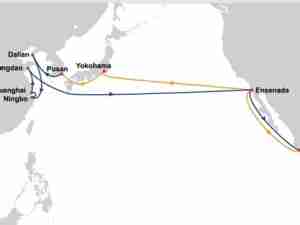Freighter sails through Northwest Passage from Canada to Europe
By: Reuters | Sep 27 2013 at 12:47 PM | Maritime
By: Reuters | Sep 27 2013 at 12:47 PM | Maritime
• SEA REWARD, the first loyalty program for shipping customers, designed and developed by CMA CGM. • Dedicated to customers booking through “SpotOn”, CMA CGM’s digital solution for instant quotes,…
View ArticleIQAX eBL offers a fast, reliable solution at no extra cost for Hapag-Lloyd customers
View Article
The European Union is discussing with member states proposals to sanction key Russian liquefied natural gas projects and a ban on using EU ports to re-export supplies destined for third…
View ArticleThe IRGC seizure of an Israeli-owned container vessel in the Strait of Hormuz poses yet another potential challenge to the container industry.
View ArticleIndia has granted marine insurance approval to four Russian firms, adding impetus to Moscow’s efforts to avoid the use of Western service providers.
View Article© Copyright 1999–2024 American Journal of Transportation. All Rights Reserved